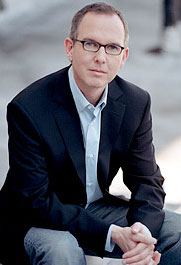he Internet has changed the way people get their news, find information, and read books. According to the Association of American Publishers, e-book sales are up 160 percent since May of 2010. More and more, consumers are turning to digital formats.
In his book, I Live In The Future and Here’s How It Works, Nick Bilton shares that we no longer rely solely on the print newspaper or evening news. Many times we will find out about breaking stories through our own online communities like Facebook and Twitter.
“These extensive new communities,” writes Bilton, “and their odd ways of communicating in bytes and snacks, tweets and links, have unsettled those who fear that this will transform our broader nations into a teeming Tower of Babel with lots of voices and noise but little deep thinking.”
This shallowness worries many who write nonfiction. They wonder if the desire for in-depth articles is going by the wayside and being replaced by content shared in 140 characters or less.
Bilton believes there is no need to worry. “Great storytelling, incisive reporting, and thoughtful editing will still prevail—but they will need to be presented to you and me in a different form to go beyond mere information.”
The good news—options are available. For investigative journalists, magazine writers, and essayists looking to write long-form pieces over 5,000 words, online publishing platforms like Kindle Singles, Byliner Originals, and Atavist provide a place to publish and highlight this kind of work.
Each of these venues caters to writers who are interested in exploring an idea in-depth, giving them up to about 30,000 words to tell the story. These outlets fill in that gap between a magazine feature and a full-length book.
Kindle Singles
Since October 2010, Amazon’s Kindle Singles has provided an avenue for writers to publish long-form nonfiction between 5,000 and 30,000 words. (They also allow fiction that falls in this word count as well). Well-known writers—like Pulitzer Prize winning writer and editor for the Washington Post Magazine Tom Shroder, journalist David Margolick, and author/creative nonfiction writer Jodi Picoult—have utilized this option, and each has a best-selling Kindle Single.
Picoult shared what appealed to her with this platform. “My agent and I really wanted to test the market for original Kindle Singles to see how strong the response might be, so we started with a collection of previously published articles and stories.”
Based on the positive response she has received, she plans on creating original short pieces to publish as Kindle Singles.
This platform is available to any writer, and the turnaround time is quick. The process is very similar to self-publishing a print-on-demand (POD) book. As the writer, you control every aspect of the project; there is no querying, no editor, no fact checker, no PR support—it is just you. So, it is important that, as with any self-published work, extra effort and money be used to ensure you are providing a quality product to your readers. It is a good idea to hire a reputable copyeditor to check grammar and punctuation and possibly a graphic designer to create a professional, eye-catching cover.
Formatting your book for Kindle Singles is a straightforward process using MS Word or similar programs. You don’t need to know HTML or use special software. Graphics can also be added to your document.
Pricing ranges from $.99 to $4.99, and you decide your price point. You also choose which royalty plan you want. Amazon automatically assigns Kindle Singles priced under $2.99 to the 35 percent royalty plan. Above that price point, you choose if you want the 35 percent or the 70 percent royalty plan. The 70 percent one sounds great, but includes some extra fees, so you will want to be sure you know what you are getting before you agree to it.
Amazon has a special area in the Kindle store on their website, set up to sell Kindle Singles, but it will be up to you to market and direct readers to your publication.
Byliner
When referring to the overwhelming amount of content online, Bilton writes, “I’m convinced that being guided online by communities that I trust won’t create an information hell that leaves you gasping for air. Instead, trusted anchoring communities will help you filter and navigate a bigger world in an eye-opening way that has never been possible before.”
This is where Byliner steps in as both a publishing company with Byliner Originals and a social network. Not only have they developed a place to publish and read long-form nonfiction, they have created a community where writers and readers can gather to find and discuss these types of pieces.
A couple years back, John Tayman, Byliner founder and CEO, said he looked at the kinds of stories he wanted to tell as a writer and also the kinds of stories he wanted to read as a reader. He found the stories fell between a conventional magazine piece and a full book.
“Obviously, there was a huge hole in the market for stories that didn’t benefit from being crammed into a magazine, nor blown up to book size, just because the publishing industry is built around size,” said Tayman.
He wanted stories that could be read to completion in two hours or less—the ones between 10,000 and 35,000 words.
“I wanted to find a way to turn the whole system on its head,” he said. “To really study how readers were discovering new content, how they were gathering together to discuss and form communities around content, and if there was a way we could figure out how to aggregate an audience of readers around the topic or more importantly, around the writer. Then you would have a built-in discovery and distribution system for Byliner Originals.”

“There was a huge hole in the market for stories that didn’t benefit from being crammed into a magazine, nor blown up to book size, just because the publishing industry is built around size.”
(Photo: John Tayman)
In July 2011, Byliner launched its website featuring a huge collection of articles, as well as Byliner Originals (which are available for purchase), by well-known writers like John Krakauer and Mary Roach. These articles are all available to read at no cost; and by signing up to be a member of this free website (just an e-mail address is needed), you become a member of this community. Like the online radio station Pandora, you can pick and choose the types of articles you want to read, and the website will gather and collect pieces based on your preferences.
Unlike Kindle Singles, Byliner is actually a publishing company for its Byliner Originals. Writers submit a query to the editors; and if the editors like the idea, they assign the article. They typically pay an assignment fee up front and then share revenues 50/50 with the writer.
By publishing with Byliner, you get to work with an editor. Byliner formats the article for the different platforms (iPad, Nook, Kindle...), and they feature it on their Byliner website. The turnaround time from assignment to publication can be as quick as a couple of weeks. For the John Krakauer original, Three Cups of Deceit, they turned it around in just ten days; and Krakauer was updating the content just six hours before it was scheduled to launch. Tayman hopes to post one new Byliner Original about every ten days.
Although they have popular A-list writers creating Byliner Originals, they are open to new writers. Tayman said their only requirement is a good story told well. One of their current bestsellers is Baby Chase by Holly Finn.
“We are excited about letting readers discover this new writer,” said Tayman. “And we’re excited for Holly because she gets the benefit of proximity from some A-list writers and is able to engage with a whole new audience.”
Atavist
Atavist, a boutique publishing house producing original non-fiction stories for digital, mobile reading devices, launched in January 2011. Like Byliner, Atavist saw the same gap in the current market and wanted to fill it.
Evan Ratliff, editor for Atavist, said, “We wanted to try and create a digital outlet for the kinds of long stories that we really loved. And specifically, we thought there could be a market for a length of nonfiction that rarely appears in print—between magazines and books.”

“We thought there could be a market for a length of nonfiction that rarely appears in print—between magazines and books.”
(Photo: Evan Ratliff)
Where Atavist and Byliner differ is with the extras. Atavist has created an iPad/iPhone app, where each story is laced with video, audiobooks, additional layers of information, and a host of other features.
Currently, Atavist has seven original stories published with new ones coming soon. They are open to work from new writers, but ask that you only send a query, no manuscripts. Stories rich in characters and narrative will catch the editor’s attention.
“If you look at what we’ve done so far,” said Ratliff, “it’s a pretty wide range of topics: history, music, personal memoir, true crime, politics. But what they all have in common is that they aren’t just articles about a topic, but are stories about a person or series of people.”
Atavist’s turnaround time is little longer than Byliner, averaging about three to six months from query to publication. They hope to publish one new story every four to six weeks. Like Byliner, Atavist pays their writers to write the assignment and then splits the revenue with them.
***
The amazing part about all these options is that they open the door for many writers who are looking for a place to publish longer, in-depth nonfiction and creative nonfiction pieces. While the platform in which they will be published has changed, the need for well-written content and great stories has not.
***
Kerrie Flanagan is a freelance writer, writing consultant, and director of Northern Colorado Writers. Her 130+ articles can be found in various national and regional publications. You can read her blog at https://www.the-writing-bug.blogspot.com or visit her website at https://www.kerrieflanagan.com.
To learn more about NCW, visit:
https://www.NorthernColoradoWriters.com
-----
Enjoyed this article? Check out more from Kerrie on WOW!:
How to Craft a Travel Article About Your Hometown
5 Things You Need to Know to Write for Magazines
Feng Shui for Writers: How to Create the Space You Love
Writing a Strong Story: Tips from the Pros
From Book to Big Screen: Interview with Screenwriter Robin Swicord
How to Pitch a Literary Agent at a Writers’ Conference